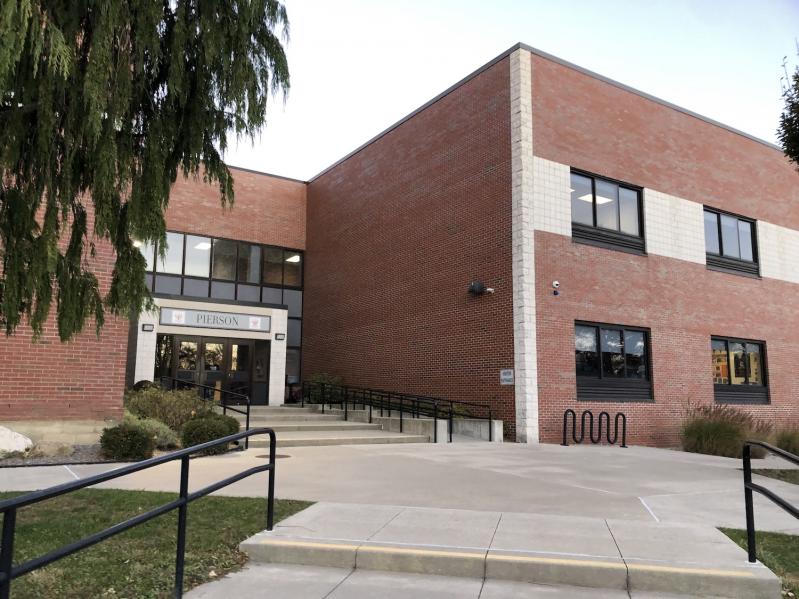According to the faculty at Pierson Middle and High School in Sag Harbor, the Yondr pouch program for cellphones has been a success.
At a Sag Harbor School Board meeting Monday, Chase Mallia, the president of the Teachers Association of Sag Harbor, presented the results of a survey of 46 teachers who weighed in on the district’s policy of having students place their phones in personal magnetically sealed pouches during school hours. Teachers said it allows them to better supervise and limit student cellphone use.
Asked whether the policy outweighs any benefit of having a cellphone in class, only two people said it did not.
The survey also took general comments from the teachers, and Mr. Malia explained that the quotes he had in his presentation were picked from paragraphs he had received. One universal comment was “the idea that students are more present,” Mr. Malia said, noting that faculty said this “presence” extended from the classroom to the hallways between classes. “We see students who are more present and engaged in class” in a way that they were not under previous efforts to limit cellphone use.
A new rule implemented this year is that students who claim to not have a phone must say so through a Google form. According to data presented by Jeff Nichols, the district superintendent, the number of students who claim not to have a phone in the high school has dropped from 100 per day last year to 37 so far this year. In the middle school the number has risen from 30 per day to 49. However, Mr. Nichols speculates that “in the middle school people are probably more aware of the rule and are just not bringing their phones.”
The school board is largely in favor of the program, with one voice of opposition. Alex Kriegsman prefers a school enforced rule as opposed to continuing to spend money on the program. “I continue to think that the idea of not having cellphones is great,” Mr. Kriegsman said, “but these bags are ridiculous and a total waste of money.” He also voiced his displeasure that there was not a meeting before the school year started to have a “meaningful discussion” on the topic.
When the program was implemented last year, Yondr had a fee of $10,972.50. Combined with additional stipends for people to man the doors at the beginning and end of the day, the total cost to the district was close to $23,000. This year Yondr has upped its fee by almost 20 percent to $13,105, now bringing the total closer to $25,000. This cost is not insignificant, and Mr. Kriegsman also pointed out that the program, and the bags themselves, are not infallible. However, the superintendent, the school board, and the administrators see the program as a way to facilitate a behavioral shift, without putting undue burden on teachers for enforcement.
“Effectively Yondr is a tool,” Michael Guinan, the vice principal, said, “and more specifically it’s an accelerant. We want to get to the place where we have a culture devoid of digital distraction. Yondr gets us there a lot quicker. And in terms of the money, $25,000, the return of investment on that if you think about the amount of time teachers need to use in oversight and enforcement, I think the R.O.I. is in our favor. So I’m a convert.”

